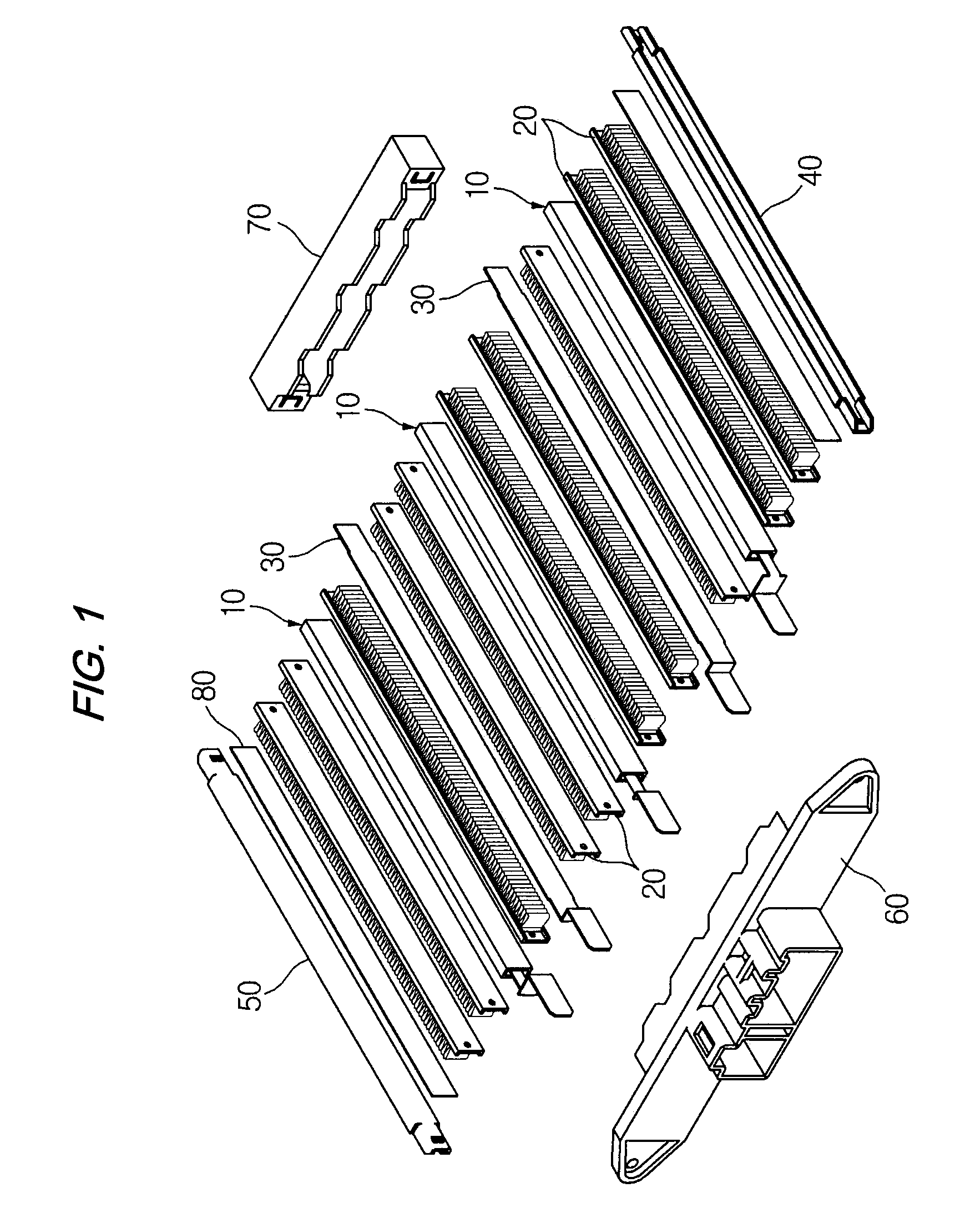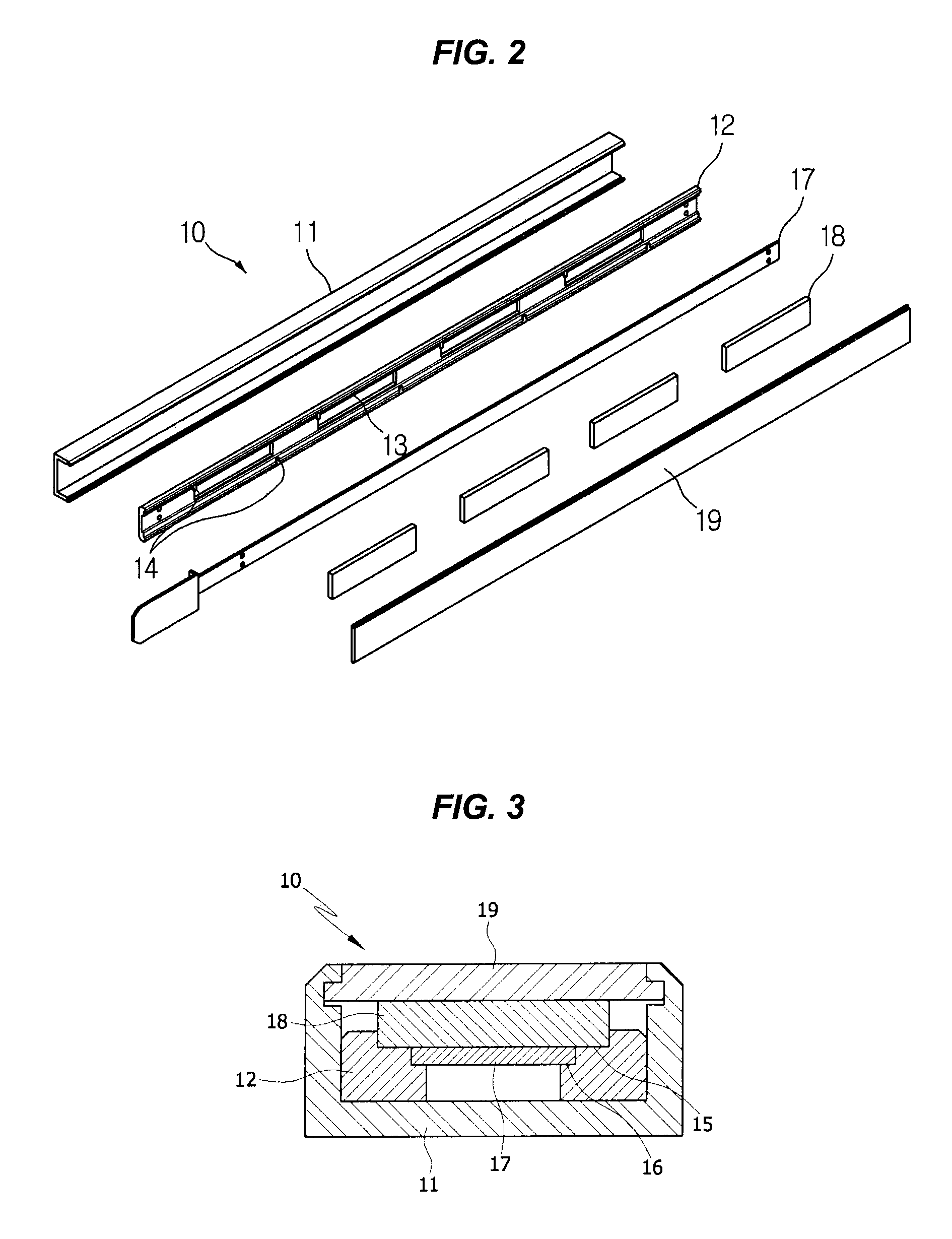Positive Temperature Coefficient (PTC) Rod Assembly and PTC Heater Using the Same
a technology of positive temperature coefficient and rod assembly, which is applied in vehicle heating/cooling devices, transportation and packaging, light and heating apparatus, etc., can solve the problems of energy waste and environmental pollution, take some time until the engine, and achieve the effect of minimizing an empty spa
- Summary
- Abstract
- Description
- Claims
- Application Information
AI Technical Summary
Benefits of technology
Problems solved by technology
Method used
Image
Examples
Embodiment Construction
[0030]Reference will now be made in detail to various embodiments of the present invention(s), examples of which are illustrated in the accompanying drawings and described below. While the invention(s) will be described in conjunction with exemplary embodiments, it will be understood that present description is not intended to limit the invention(s) to those exemplary embodiments. On the contrary, the invention(s) is / are intended to cover not only the exemplary embodiments, but also various alternatives, modifications, equivalents and other embodiments, which may be included within the spirit and scope of the invention as defined by the appended claims.
[0031]In various embodiments, a positive temperature coefficient (PTC) rod assembly includes a channel-shaped rod cover 110 having an open side and flanges 111 protruding inwards from opposite edges thereof, PTC elements 180, lower surfaces of which are each in contact with an inner bottom of the rod cover 110, and an electrode termin...
PUM
 Login to View More
Login to View More Abstract
Description
Claims
Application Information
 Login to View More
Login to View More - R&D
- Intellectual Property
- Life Sciences
- Materials
- Tech Scout
- Unparalleled Data Quality
- Higher Quality Content
- 60% Fewer Hallucinations
Browse by: Latest US Patents, China's latest patents, Technical Efficacy Thesaurus, Application Domain, Technology Topic, Popular Technical Reports.
© 2025 PatSnap. All rights reserved.Legal|Privacy policy|Modern Slavery Act Transparency Statement|Sitemap|About US| Contact US: help@patsnap.com



